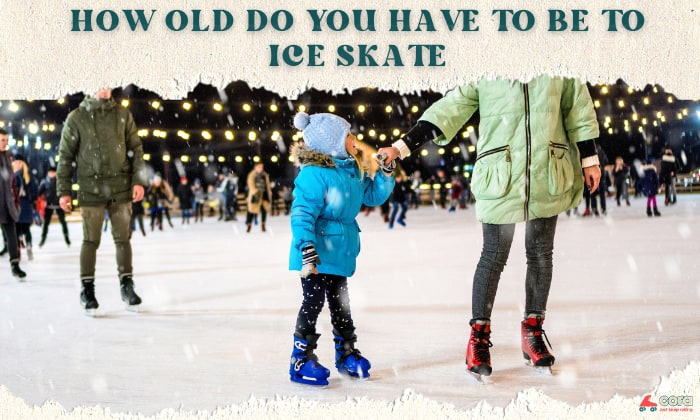Every sport has rules and guidelines for clothing or uniforms to ensure the player is comfortable and protected and doesn’t encounter any movement restrictions.
The same goes for ice skating. What to wear to ice skating lessons? What should I wear before heading into the rink to enjoy my class fully?
This article will answer all these questions and explain why you should be mindful of your outfit, especially if it’s your first time ice skating.
Page Contents
Outfit ideas for first-day ice skating lessons
We can be fashionable when dressing up for figure skating lessons. However, check out the tips below to guarantee the best ice skating attire.
1. Inner shirt or tank top
Most, if not all, skaters begin their dress-ups with a shirt or a tank top underneath for additional warmth. Ideally, the tank tops should be form-fitting and moisture-wicking, so workout ones would be the best choice.
2. Sweater
An athletic sweater or running jacket should be ideal for covering your upper body. Alternatively, you can go for a long-sleeved shirt.
To ensure optimal comfort, you should bring two sweaters with you to the skating rink – one thin and one thick. As such, you can change to a more comfortable one if you get too hot or cold.
3. Outer garment
If skating outdoors, you can consider an additional layer of warm clothing, such as a warm vest. It comes after the sweater, and it is often the outermost layer a skater wears on top before ice skating.
4. Gloves or mittens
Gloves and mittens both work for ice skating, often for protective reasons. However, we should note that choosing one over the other has benefits and drawbacks.
Mittens have the upper hand in keeping your hands warm. Meanwhile, gloves give skaters a better feel of any surface like the ice, especially for beginners.
5. Pants
Like the upper layers, your pants should also keep you warm. And what is the best type of pants to wear? Thick fleece leggings or running tights would be the best. And to keep yourself comfortable, find ones with a nylon or spandex blend.
6. Thin socks
Beginners usually pick a pair of thick socks for warming reasons. However, this isn’t always the best idea.
Although thick socks can provide more insulation against the rink’s cold, their thinner counterpart enhances the skate’s fit. Additionally, these sock types improve breathability around your feet.
If your feet still feel cold after putting on the socks, you can wear legs warmer for more coverage. These accessories can also double act as protective gear that cushions the impact should you fall over.
7. Helmet
Experts recommend beginner skaters use helmets when learning to ice skate. But when choosing, look for fine details like ASTM F1447 or Snell B-90A to ensure you’ve got a certified helmet for ice skating.
8. Accessories
Some skaters add more garments to warm them, especially when skating in winter. These include earmuffs, hats, and scarves. Nevertheless, these accessory clothes are optional.
Dos and Don’ts
Dos
- Make sure your practice clothes fit well without restricting any of your movements. Otherwise, you’re more prone to mishaps.
- Choose the appropriate shoes. Like your clothes, these should fit your feet snugly without cutting off circulation.
- Consider using protective gear like helmets and knee pads for added safety.
- Taking off some of your clothes once you begin warming up will keep your body from overheating.
Don’ts
- Never wear jeans.
- You shouldn’t wear anything below the helmet.
- For females, do not wear long dresses, or they’ll trip on the skates.
- When choosing gloves, do not choose fingerless ones because “Your fingers are going to fall off,” as pointed out u/crystalized17 on Reddit.
Conclusion
What we wear is often a reflection of our personality. It reveals our styles, and it’s up to anyone to appreciate them. However, preference may not always be a consideration in sports and activities like ice skating.
So, what to wear to ice skating lessons? You should put on multiple layers like shirts, sweatshirts, jackets, ski leggings, gloves or mittens, well-fitted shoes, and safety gear.
Other skaters would sometimes alter the above combination. But remember the dos and don’ts, and we’ll achieve safer skating.
Read more: What to wear ice skating indoors?

Harrison is a skating enthusiast who picked up the sport during her student exchange years in Canada. She has been a skating coach for children and teens for 3 years and now holds classes as a freelancer. Harrison entwines her experience leading skating classes in the content published on Cora to help readers fall in love with skating, just like she did.
















